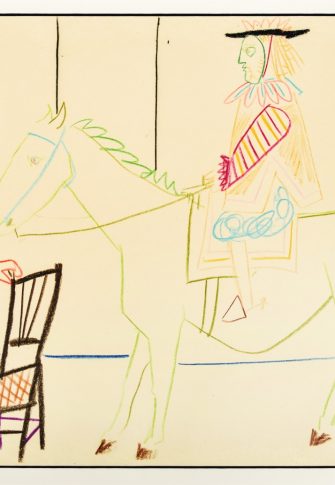In September, Bronwyn Katz was awarded the FNB Art Prize. This prize awarded at Art Joburg, includes a major exhibition. We caught up with Katz, to chat about words, her work, and the prize.
Your work is predominantly sculptural, but your approach is remarkably graphic, with line and contrast dominating your formal approach. What motivates you into this unique sculptural approach?
A keen interest in drawing, in all aspects of the word drawing. I literally draw from my material, disassembling my material to simpler forms of itself and then make the decision to either find a new form of assembly or to display the individual simplified forms. My approach is also informed by an interest in language and writing, the similarities or relationship between drawing and writing interests me.
Your work reads as abstract and minimal. What attracts you to this language, which is gnomic and ambiguous, as opposed to more direct, representative approaches?
What’s interesting is the failure of representation. I would describe my work as representational and direct. I try to represent a series of codes which are specific to me and my experience, i am not trying to be gnomic or ambiguous. The materials or objects I use are everyday materials and objects , most people know exactly what they are looking at when seeing the work, they know that it is a bedspring, wire, steel wool or a pot scrub. Perhaps the work is largely understood or read as abstract or minimal because language and words are abstract and minimal.
While you have a deep commitment to form, your work can’t be separated from its distinct materiality. The use of old mattresses speaks of poverty and the tragic quality of ruined and broken things. And yet it is also incredibly intimate. What draws you to this material in specific? What motivates your choice of materials in general?
I think the mattresses, speak of life, of bodies and the marks they makes, the residue left behind. As someone interested in reading marks and residue, old mattresses served as a great starting point as they reveal the most intimate parts of life for example birth, sex, sleep, maybe even death. Everyone has some or other memory or association of or with a bed. The materials I choose need to provoke a memory or idea of everyday life for most people. Irrespective of race, class, gender or sexuality everyone has some relationship to a bed or mattress or metal.
How do the other aspects of your practice, performance and video, tie into your sculptural work. What is for you the connecting thread to your practice?
A focal point of my video performances has always been my voice, whether I am reading a letter in the video or reciting a prayer. My sculptural practice has opened up the possibility of producing language, my own language, an alternative way of speaking of using my voice. What connects my video performances and my sculptural practice is my voice and my agency. Repetition is a formal aspect that connects the different branches of my practice.
Your work feels rooted into a local context, and consequently seems to have a political edge. Do you feel that art has a role to play in political expression?
Yes, I think art grants us a platform to articulate suppressed histories and opens us up to alternative gestures as strategies for political resistance. At the very least, art has the potential to spark an idea or thought in someone else. This is incredibly powerful.
The FNB Art Prize comes with a major exhibition attached. What are your dreams for this show? And more generally where do you see your work and career going?
The FNB Art prize awards me with the opportunity to present an installation at FNB City in the heart of Johannesburg city centre, this is very exciting. I am hoping to use this as an opportunity to expand of existing concepts in my practise and hopefully contribute something meaningful for the communities who occupy the space. I see my career moving more and more into collaborative practices, with individuals or groups outside of the visual arts. There is so much growth that my practice needs and I realise that collaboration is a great tool for that potential growth.









